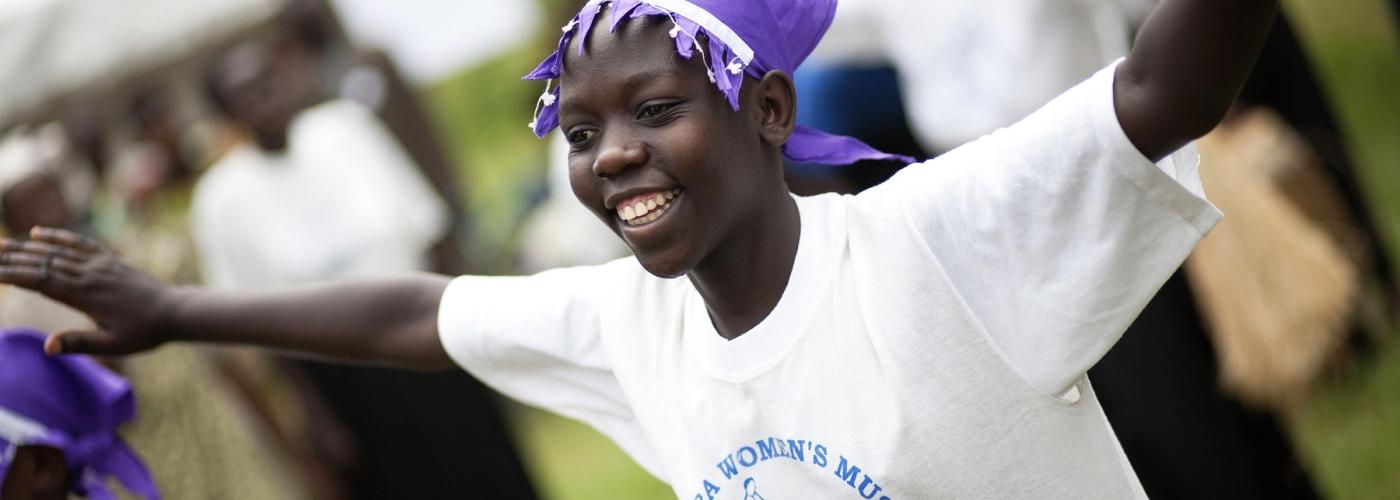Cooperative Girls Centers - Mobilizing Local Resources to Improve Health Outcomes
Image

Localization is the recognition that local stakeholders know better what their challenges are and how to solve them than do traditional development practitioners. It necessarily positions local stakeholders as solution-makers and implementors while positioning development practitioners as facilitators, trainers, and networkers.
Those of us who work in cooperative development are fortunate because cooperatives are, by nature, localized development engines. Cooperatives are businesses, owned and operated by their members to meet member needs. Our job as cooperative development organizations is not to directly meet member needs, but instead to listen to cooperative stakeholders, train them where needed on roles and responsibilities, and to build on their existing skills in areas like finance, governance, monitoring, and evaluation to ensure that members have the full breadth of knowledge necessary to successfully run their own cooperatives.
HealthPartners has been working with locally owned health cooperatives in Uganda for over 25 years. In response to their desire to involve young women in the cooperative movement, HealthPartners recently partnered with interested health cooperatives and health care providers to launch Girls Centers (GCs), which mobilize local resources to build the skills and knowledge of young women ages 10 – 24 in health and leadership. The goal of GCs is to build a cadre of capable and knowledgeable women leaders to drive the future of health cooperatives. Given the heavy influence women have on the health of families and communities, their leadership is paramount.
The foundation of the GC concept is a network of local, mutually beneficial partnerships with cooperative members, health care providers, community leaders, schools, and businesses. The partnerships are simple, sustainable, and driven by the GC members. Member needs are identified by GCs via needs assessments and member feedback and partnerships are planned to meet identified needs. HealthPartners’ role has been to support GCs to develop policies, partnership agreements, and work plans, budget and track spending, and measure and report progress.
Partnerships look different from one GC to another, but one common partnership in almost all GCs is with local savings group experts drawn from the health cooperative members. The local experts train GC members in the savings group concept, rules, and procedures, then follow up to ensure they are successfully implementing. GC members learn to save for health cooperative premiums and other needs while the cooperative builds its membership and enhances the likelihood that the girls maintain their membership and grow into leaders.
Another common partnership is between the GCs and health care providers. In a health cooperative, providers are incentivized to offer health education because healthier members mean fewer premiums are paid out in treatment costs. Health education is especially crucial for women of reproductive age (WRA), as they are learning to care for themselves, plan for their futures and take care of young families. Health care providers have offered WRA-specific education sessions at GCs on topics like nutrition, food safety and preparation, HIV/AIDS, personal hygiene, and peer pressure as well as parent sessions on adolescent health and empowerment. The education sessions arm members and parents with critical information to care for themselves and their families and providers benefit from healthier members. In two GCs, members have even partnered with village health teams to share relevant cooperative and GC information and lessons in their communities.
The value of localization is not only in its ability to identify and meet needs with local solutions, but in the sustainable network founded by, in, and for communities. Because the GC partnerships are not built on donor funds - but instead on mutual objectives and local investments – when donor funds are no longer available, the network remains intact as long as both sets of partners are benefitting.
The model is not without challenges. Building a local network based on mutually beneficial relationships is time-consuming and relies largely on individuals who are willing to think creatively. Implementing partners have to choose the right local stakeholders with which to partner – those with whom they share mutual objectives – so progress moves both partners toward their larger goals. And stakeholders must be motivated and invested in identifying and meeting their own needs.
Despite the challenges, shifting decision-making power into the hands of those who can best leverage it creates sustainable, culturally relevant, and culturally defined progress. Cooperatives are the epitome of localization – they identify needs in the community, address them in a culturally appropriate manner, and are long-standing institutions whose influence does not rely on donor funding. Built by and for their members, cooperatives evolve to meet changing member needs. If we recognize their value and support their evolution, we will see lasting development.
This post comes from an implementer of the Cooperative Development Program under USAID’s DDI LFT Bureau.

